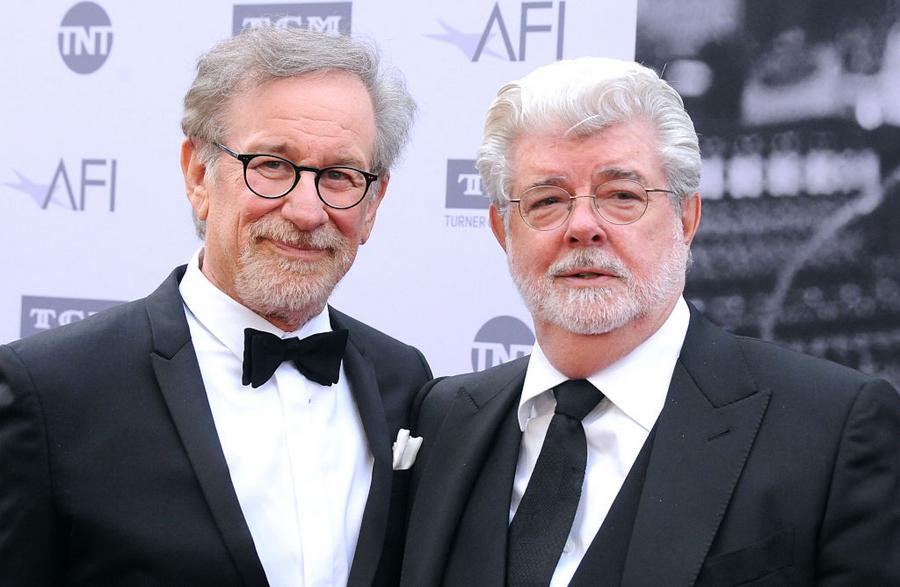Out of all the celebrity billionaires on the planet, George Lucas is the richest. As you probably know, George became exceptionally rich thanks to “Star Wars.” He created the characters, wrote the screenplay, and directed the 1977 debut film. What you may not know is that George owes his entire $8 billion fortune to one risky bet he placed back in 1973.
Long story short, instead of accepting the $500 thousand director’s fee he was entitled to at that point, George told 20th Century Fox that he would direct what became “Star Wars” for $150,000 but, in exchange, he would own 100% of all Star Wars merchandise and intellectual property rights. That meant any time a Star Wars toy of film sequel was created, the profits went to George, not Fox. It’s easily the best business deal in Hollywood history. In 2012, George sold the rights to Star Wars to Disney for $4 billion.
As crazy as this sounds, Star Wars didn’t always seem like a sure bet. In fact, production of the first Star Wars movie was such a disaster that at one especially dark point, a hopeless George Lucas went to his good buddy Steven Spielberg for help. What transpired next would turn out to be one of the greatest bets ever made in history. A bet that still, to this day, earns Spielberg millions upon millions of dollars for a movie he had absolutely nothing to do with.
Getty
Right from the get-go, Star Wars seemed destined for failure. After just one week of filming on location in the deserts of Tunisia, Lucas was already well behind his original production schedule thanks to several on-set problems and breakdowns. What happened?
First of all, Tunusia is supposed to be a desert 80% of the year, yet somehow the set was devastated by a rare April rainstorm during the first week of photography. Secondly, throughout the entire production, the film continuously suffered from a variety of malfunctioning electronics, broken props, and crew injuries. Eventually, the production moved to a studio in England where the British crew had little interest in making what they considered a dumb children’s movie. Nearly every actor involved in the project, including Harrison Ford, was convinced that Star Wars would a complete and utter failure.
Furthermore, Lucas clashed with the film’s editors, costume designers, studio executives, and technical advisors over nearly all of the post-production elements of the movie. He was so disgusted by one of the final cuts that the movie’s official release date had to be delayed from Christmas 1976 to summer 1977; this move caused the budget to swell 40%.
George was close to having a nervous breakdown over the fact that the final version of the movie was not living up to his original vision. To make matters worse, the star of the film, Mark Hamill was involved in a serious car accident that scarred his face so badly that all re-shoots were impossible.
Throughout the entire process, George often appeared severely depressed and was even diagnosed with hypertension from all the stress. Interestingly, several of the Fox executives actually loved what started to come together towards the middle of 1977. One Fox exec told Lucas that Star Wars was going to be “the biggest hit ever made.” To which George replied:
“Oh, no. It won’t make more than $15 million.“
At the peak of his post-production depression, George decided to take a weekend trip to the Mobile, Alabama, set of Steven Spielberg’s film “Close Encounters of the Third Kind.” The weekend was meant to clear his head and help him regain some confidence. Unfortunately, the visit had the exact opposite effect. As Spielberg would later recall:
“George came back from Star Wars a nervous wreck. He didn’t feel Star Wars came up to the vision he initially had. He felt he had just made this little kids’ movie. He came to Mobile, Alabama, where I was shooting Close Encounters on this humongous set, and hung out with me for a couple of days. He said, ‘Oh my God, your movie is going to be so much more successful than Star Wars. This is gonna be the biggest hit of all time’.”
At this point, a very desperate George Lucas made a fateful bet. Again, in Spielberg’s own words:
“He said, ‘You want to trade some points? I’ll give you two and a half percent of Star Wars if you give me two and a half per cent of Close Encounters.’ I said, ‘Sure, I’ll gamble with that, great.'”
So, who ended up on top in this bet? Close Encounters was a big hit in its own right, going on to earn $300 million.
By the end of 1978, Star Wars’ worldwide box office receipts totaled $500 million, earning Spielberg a nice little $12.5 million bonus. That’s the same as earning around $70 million in inflation-adjusted dollars. Even decades years later, that fateful bet is still putting millions of dollars into Steven Spielberg’s bank account.
“Close Encounters made so much money and rescued Columbia from bankruptcy. It was the most money I ever made, but it was a meager success story. Star Wars was a phenomenon, and I was the happy beneficiary of a couple of points from that movie, which I am still seeing money on today.”
What’s the lesson here? Maybe it’s as simple as always supporting your friends in their time of need. You never know how karma might come back in your favor!

